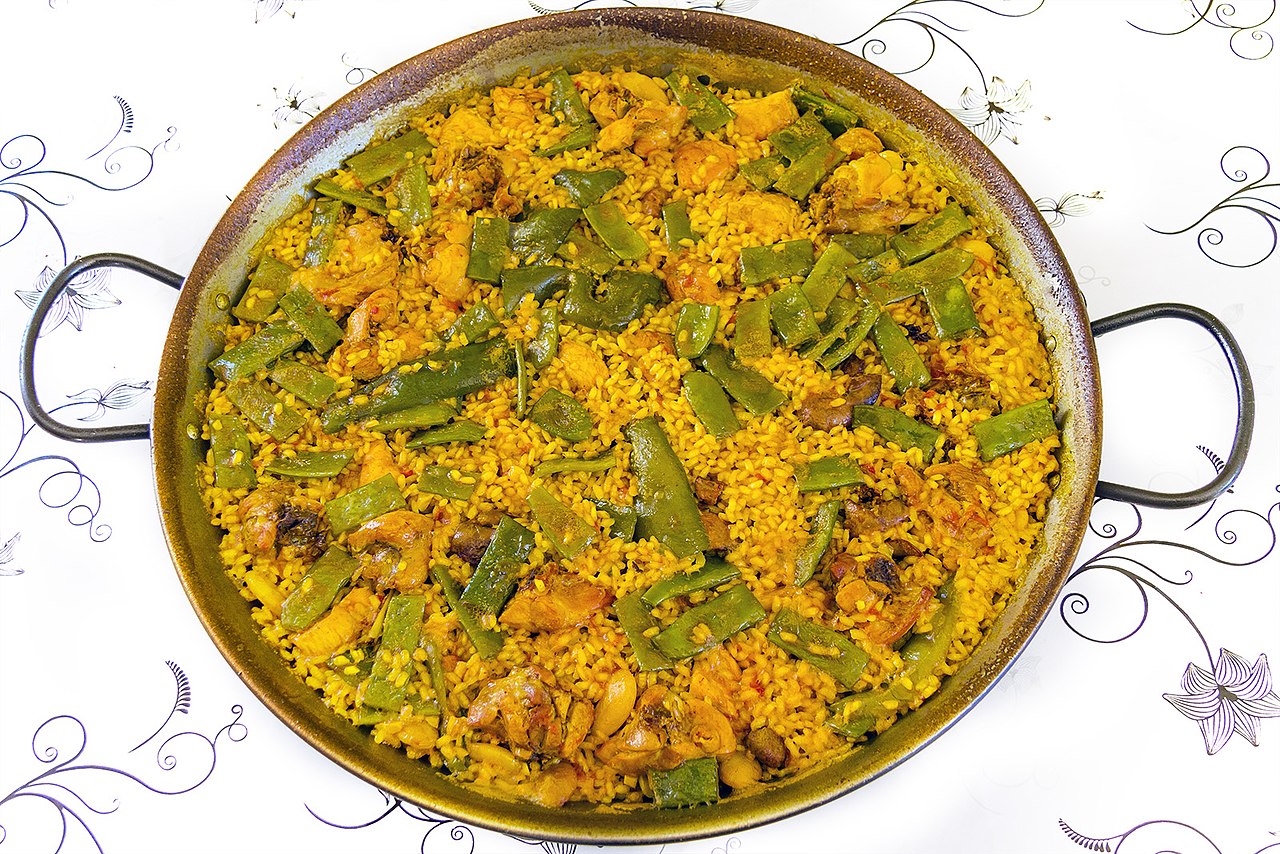
All the Typical foods of spain they are famous all over the world. Furthermore, we will tell you that the gastronomy of our country has international consideration. In fact, as you know, many Spanish chefs enjoy a prestige that has nothing to envy to that of the French. So what France was the cradle of haute cuisine.
However, typical Spanish food has its roots in the tradition and it is largely due to nutritional needs. Our ancestors needed to eat hearty dishes to regain strength after hard days of work in the fields. As a result, a gastronomy that was as caloric as it was tasty emerged, whose dishes have become authentic symbols that make up the typical foods of Spain. We are going to show you some of them.
The potato omelette, emblem of the typical foods of Spain
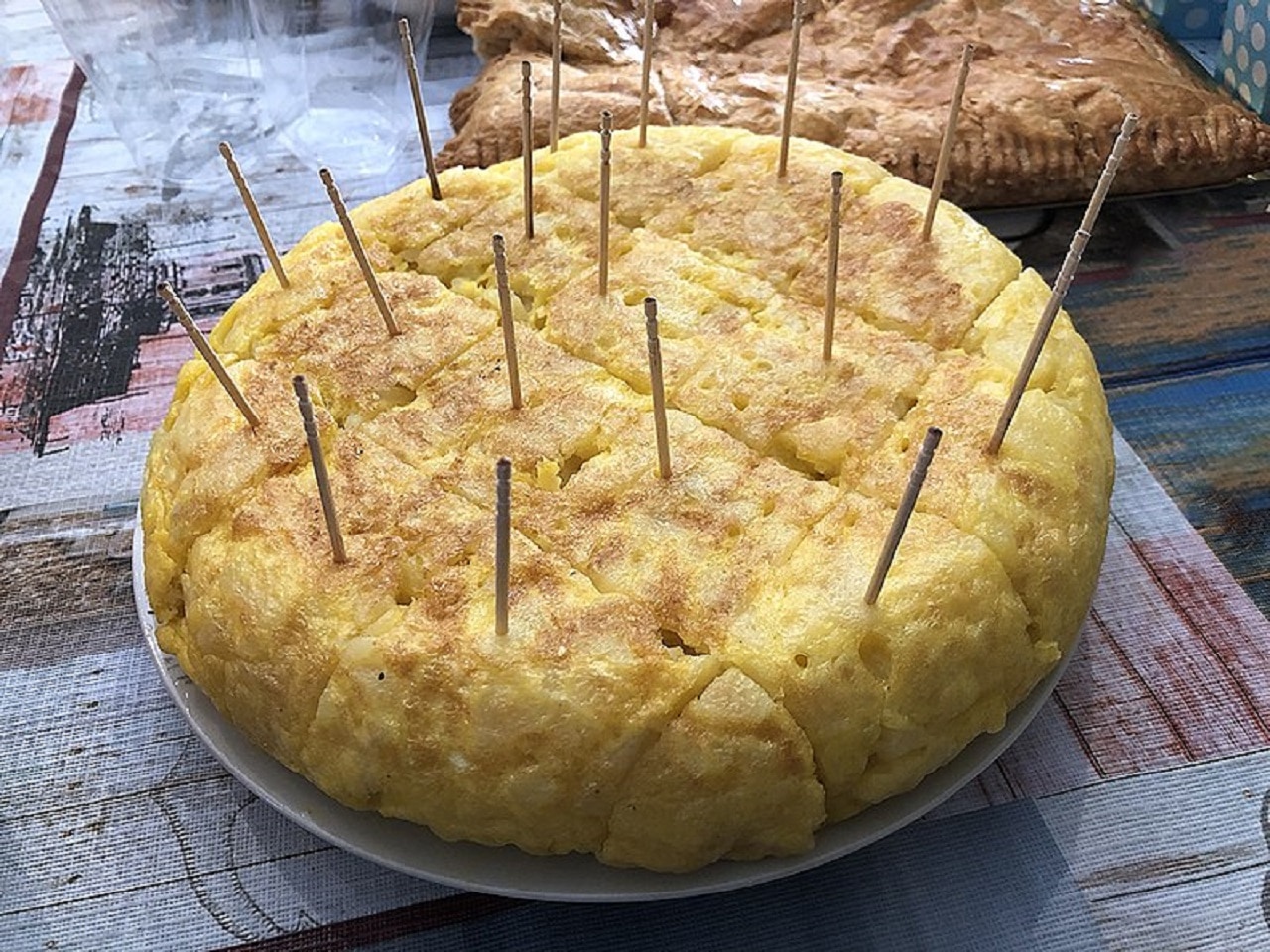
The tortilla de patatas
Probably, this dish, as simple as it is delicious, is the best known internationally of our gastronomy. But its origins are unclear. Thanks to the Chronicles of the Indies, we know that both the conquerors and the natives already consumed the egg omelette.
For its part, the potato is a tuber from South America that the Hispanics knew thanks to the Incas. But the first explicit mention of this dish is from 1817. It is a document addressed to the Cortes de Navarra in which it is said that the peasants consume it. On the other hand, a legend says that the potato omelette was invented by the Carlist general Zumalacarregui to satisfy the hunger of his troops, who were besieging Bilbao.
However it may be, this kind of tortilla is prepared throughout Spain and is delicious for natives and foreigners. As its name suggests, it contains eggs, potatoes and, additionally, onion. Likewise, other variants come from it, such as the Tortilla Paisana, which includes chorizo, red pepper and peas.
The paella
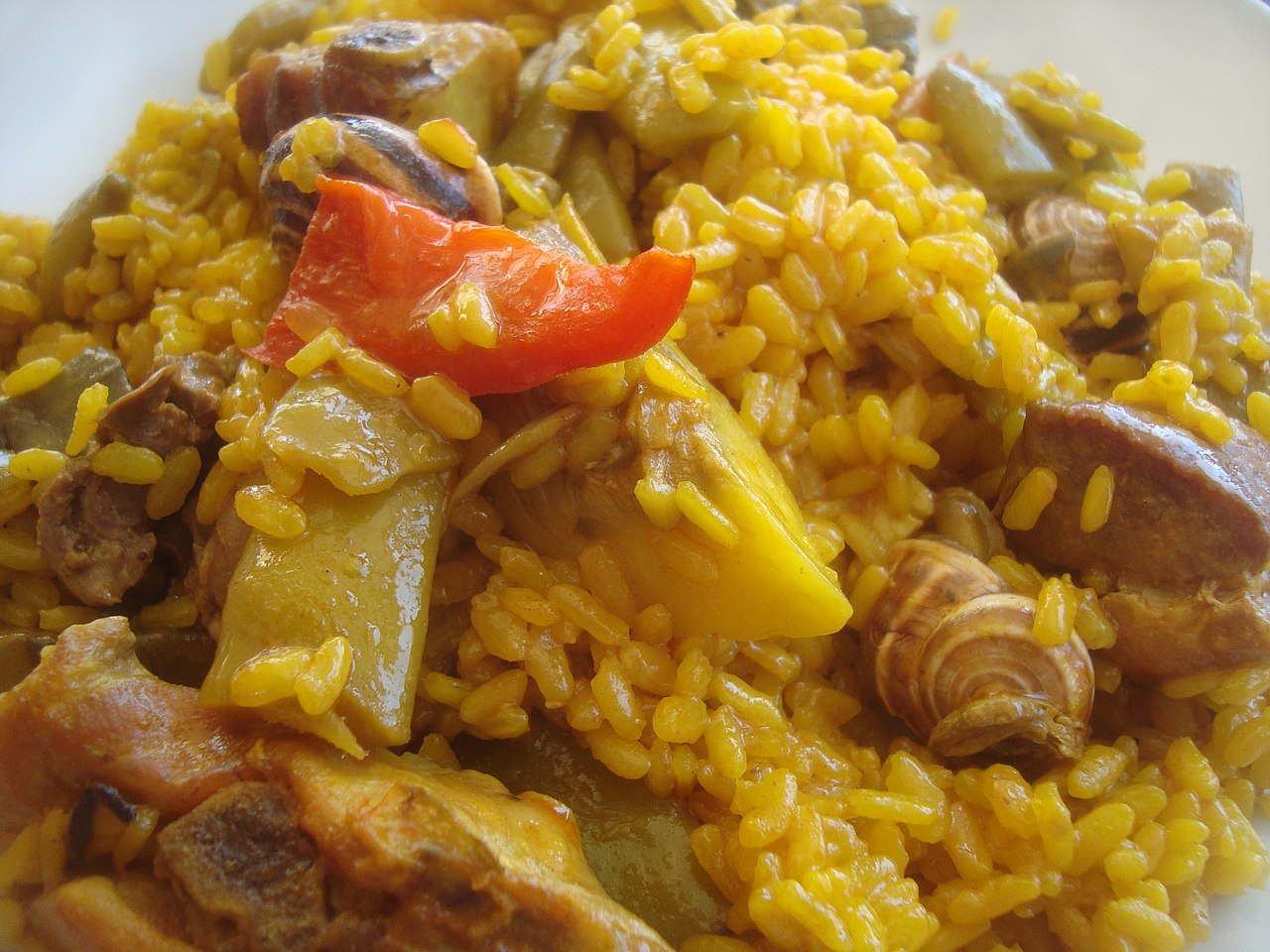
a plate of paella
Surely this dish is the most popular, as a typical food of Spain, abroad. In fact, it is considered the most international of our gastronomy. It is native to the Levantine area, a land where rice is abundantly grown. The origins of this recipe are even older than those of the potato omelette, as they are believed to be linked to the arrival, precisely, of rice to the Iberian Peninsula in the XNUMXth century with the Arabs.
In any case, knowledge of paella is already widely documented in the XNUMXth century, although it was then called Valencian rice. It was even already popular, because also at that time it was replicated in other regions with variants. It is precisely one of the dishes that has more reworkings. We don't need to mention you seafood, chicken or meat paella, to give just three examples.
However, you should know that the Valencian paella, which is the original, does not contain any of these products. Its recipe is simpler and with a greater number of vegetable ingredients. In total, it is made with nine basics: rice, rabbit, chicken, green beans, tomato, olive oil, saffron, salt and water. However, others such as garlic, paprika, artichoke, rosemary and even snails are also allowed.
Asturian bean stew

Asturian bean stew, one of the typical foods of Spain
This northern dish is also known worldwide. As we told you before, its recipe is due precisely to the caloric needs of the ancient Asturians, accustomed to low temperatures and hard agricultural work.
Although the consumption of broad beans ("fabas") in Asturias dates back to the XNUMXth century, the fabada was born, according to some scholars, in the XNUMXth century, although there is no documentary evidence. The first written mention is found in the Gijón newspaper The Trade in 1884. For this reason, other gastronomes think that the dish was born at the end of the XNUMXth century.
In any case, it is the strongest recipe we have seen so far. Because it not only contains broad beans, paprika, garlic, onion and water, but also the popular compango. This, which is cooked with the beans themselves, is made up of chorizo, black pudding, pork shoulder and bacon in abundance.
As a curiosity, we will mention that popular wisdom says that the bean stew tastes better the next day. This means that if it is left to rest for twenty-four hours, the dish will be even tastier. And this recipe has also achieved international fame and has been reproduced in much of the world. For example, in Mexico there are similar idiots and in Brazil the feijoada.
Gazpacho, another symbol of typical Spanish food

Gazpacho, another symbol among the typical foods of Spain
It is another of the international dishes of Spanish cuisine. In your case, it comes from Andalusia, where he probably arrived with the Muslims. In fact, it is known that it was already consumed in Al-Andalus in the eighth century. However, the recipe was not the same as now. Keep in mind that one of the main current ingredients is tomato. And this came from America after the conquest.
Along with it, pepper, garlic, bread, olive oil, vinegar, salt and water make up this delicious cold soup. But cucumbers and onions are also added to it. On the other hand, this dish is also related to the peculiar idiosyncrasies of the area. It has nothing to do with the work of its inhabitants, but with the intense heat that occurs in Andalusia in summer. To combat it, this recipe was created cold and refreshing soup.
Like the previous dishes, gazpacho has also spread throughout the world. Not only are variants made in many other regions of Spain such as Castilla La Mancha, Extremadura and even Aragón, but also in other countries. For example, in Mexico the morelian gazpacho, which is prepared with typical fruits from the area of Morelia, city of the state of Michoacán.
Cod al pil pil
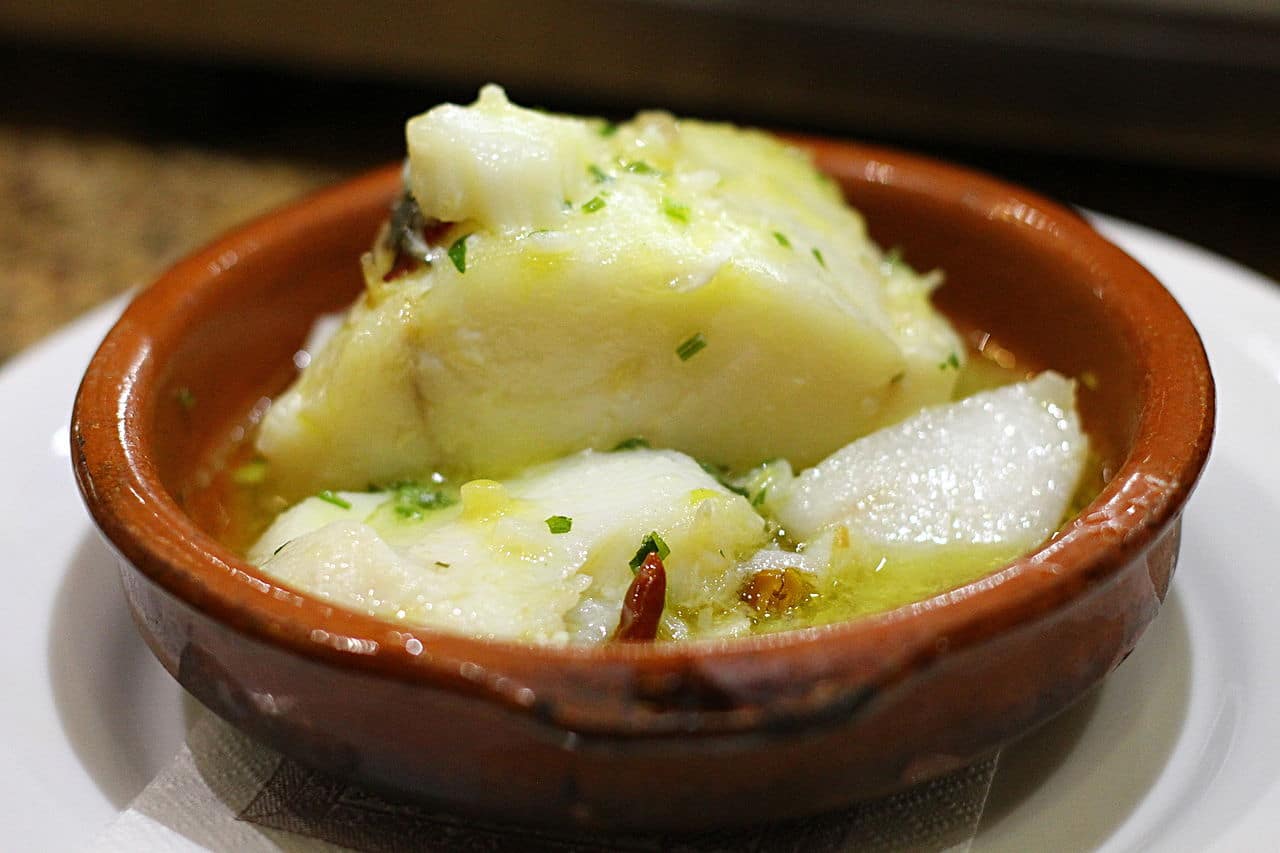
Cod al pil pil
For centuries, cod was the only fish consumed in inland areas of Spain. The reason was that, in a time without refrigerators, it was very well preserved in salting and could be transported to distant areas of the coast.
However, this recipe is typical of the Basque cuisine, from which it has spread throughout Spain and half the world. In fact, among the typical food of Spain made with fish, is the most popular and also the best known recipe of the exquisite gastronomy of Euskadi.
In his case, the origin is well known. In 1835, a Bilbao merchant named Simon Gurtubay he placed an order for a hundred or a hundred and twenty top-quality cod. However, they sent him no less than a million pieces. He couldn't return them, so he either went bankrupt or sharpened his wits. To release the product, he devised a simple and tasty recipe that would be the cod al pil pil. It was so successful that Gurtubay became rich.
Also as a curiosity, we will tell you that the name of this dish is onomatopoeic. Pil pil reproduces the bubbling that sounds when the olive oil binds with the fish gelatin. Along with these two ingredients, the recipe includes garlic, peppers and chillies.
Likewise, this traditional cod recipe was cooked in a crockpot which was also used to serve it, precisely, with the sauce bubbling.
Madrid stew

A Madrid stew
It may not be as popular abroad as the previous ones, but there is no tourist who leaves Madrid without trying it and, without a doubt, it is by right among the typical foods of Spain. Its main ingredient is chickpeas, which were probably already introduced to the Iberian Peninsula by the Carthaginians.
However, its use for stews is later. It is mentioned as the first of them the Sephardic adafina, which accompanied the chickpeas with lamb meat. But the historical antecedent of Madrid stew, according to experts, could be the rotten pot from La Mancha. This dish, which was already cooked in the Middle Ages, included legumes (in this case, red beans) and different meats.
On the other hand, the Madrid stew is made up of chickpeas, vegetables that are prepared separately and an addition of meat. Among these, chorizo, black pudding and pork bacon, chicken parts and veal shank. However, in its origins, Madrid stew was a popular dish and, consequently, more humble.
It would be in the XNUMXth century when the dish began to appear on the menus of Madrid restaurants. Specifically, at that time it was offered by the luxurious restaurant Lhardy From the capital. Thus, the upper classes became familiar with this delicious dish that today is the culinary symbol of Madrid.
In addition, we have to tell you that, curiously, Madrid stew is one of the dishes that has broken into two or even three, if the meats are eaten separately. Already in the XNUMXth century, the cooking broth began to be extracted in the so-called "primer overturn" and a soup with it that is consumed before cooking itself.
Santiago's cake
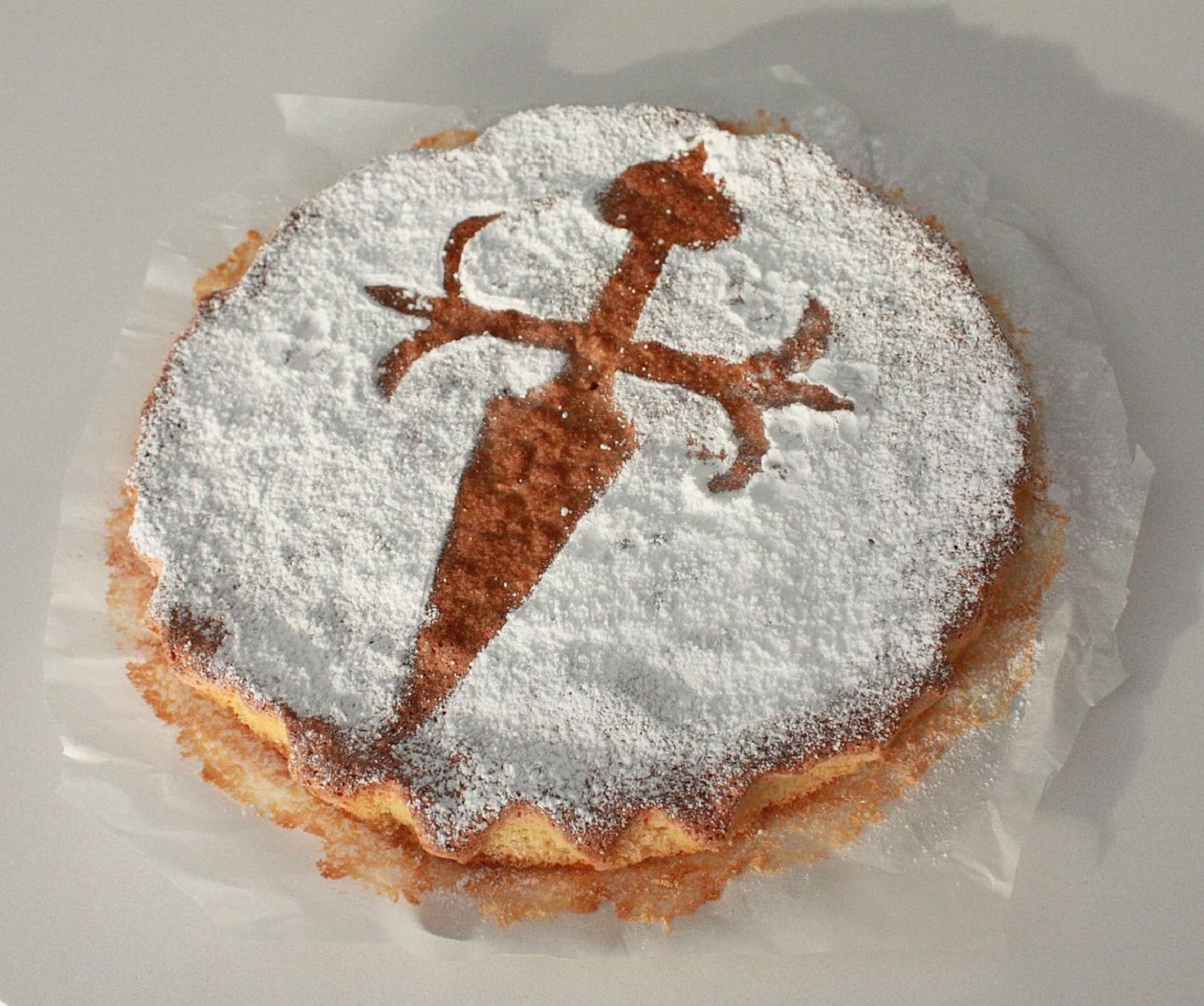
ALMOND CAKE
Could not miss the sweet in this presentation of typical food from Spain that we are doing for you. We could talk to you about casadiellas Asturian, of the pestinos of Andalusia and Extremadura, of the nougat Levantine or of the rub each other Cantabrians. But we have chosen to do it the Santiago's cake, from Galicia.
Although already in the XNUMXth century there is talk of a royal cake with similar ingredients, the first written recipes for this sweet date back to the XNUMXth century. Also, the recording of Cross of Santiago on its surface it is even more recent. It was the idea of the Compostela Casa Mora in 1924.
The main ingredient of the Santiago cake is the almonds. And, along with them, sugar, eggs, cinnamon and lemon or orange peel. With this simple recipe, one of the tastiest sweets in the world is made.
In conclusion, we have presented you with some of the most representative dishes of the Typical foods of spain. But, inevitably, we have left in the inkwell others like the crumbs in its different regional varieties, the Roasted Peppers Salad of Catalonia, the Castilian and Aragonese suckling lamb (called ternasco), the gazpacho or the hake in green sauce. Special mention deserves the ham, but this is not a recipe but a product. Haven't you felt like tasting them?